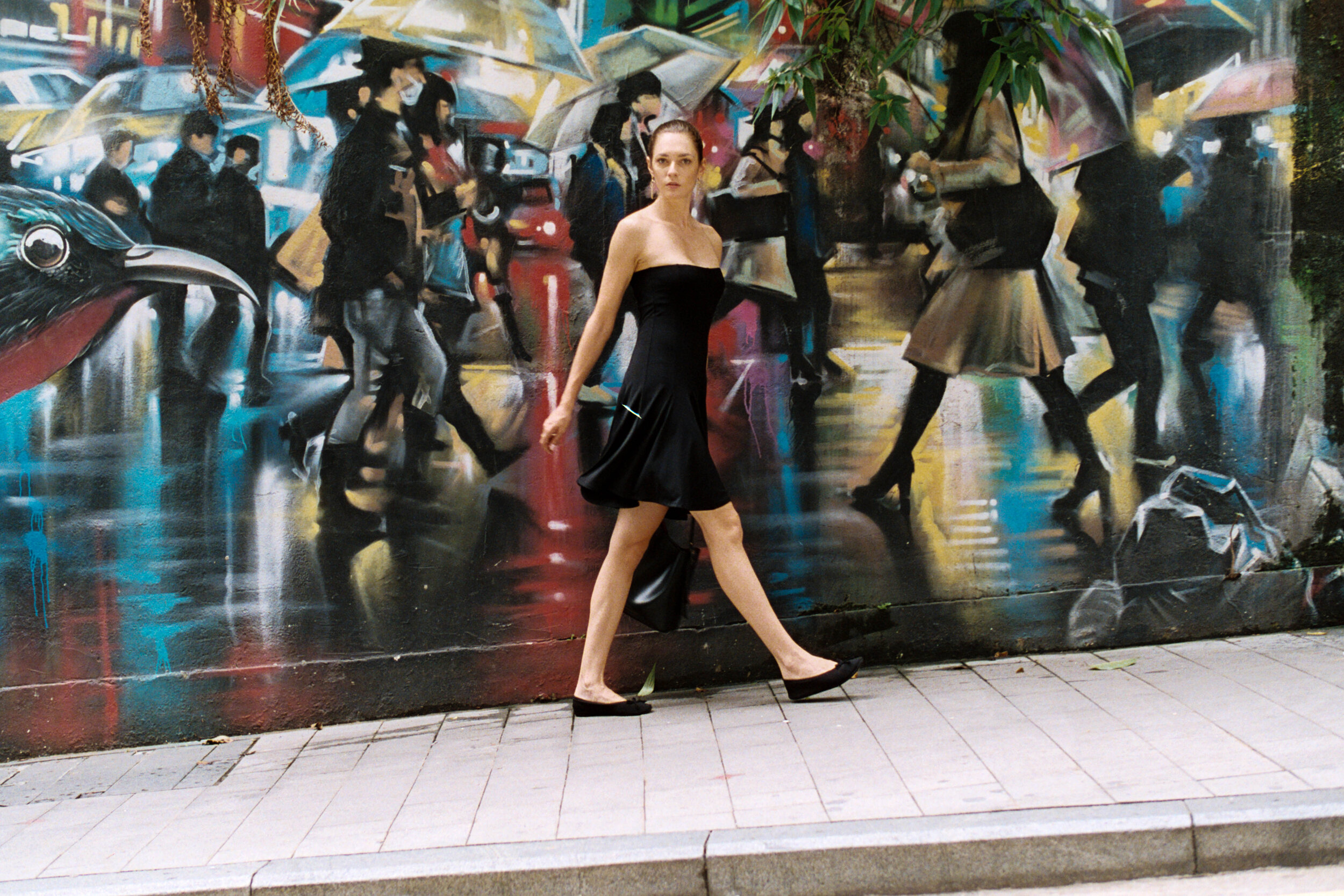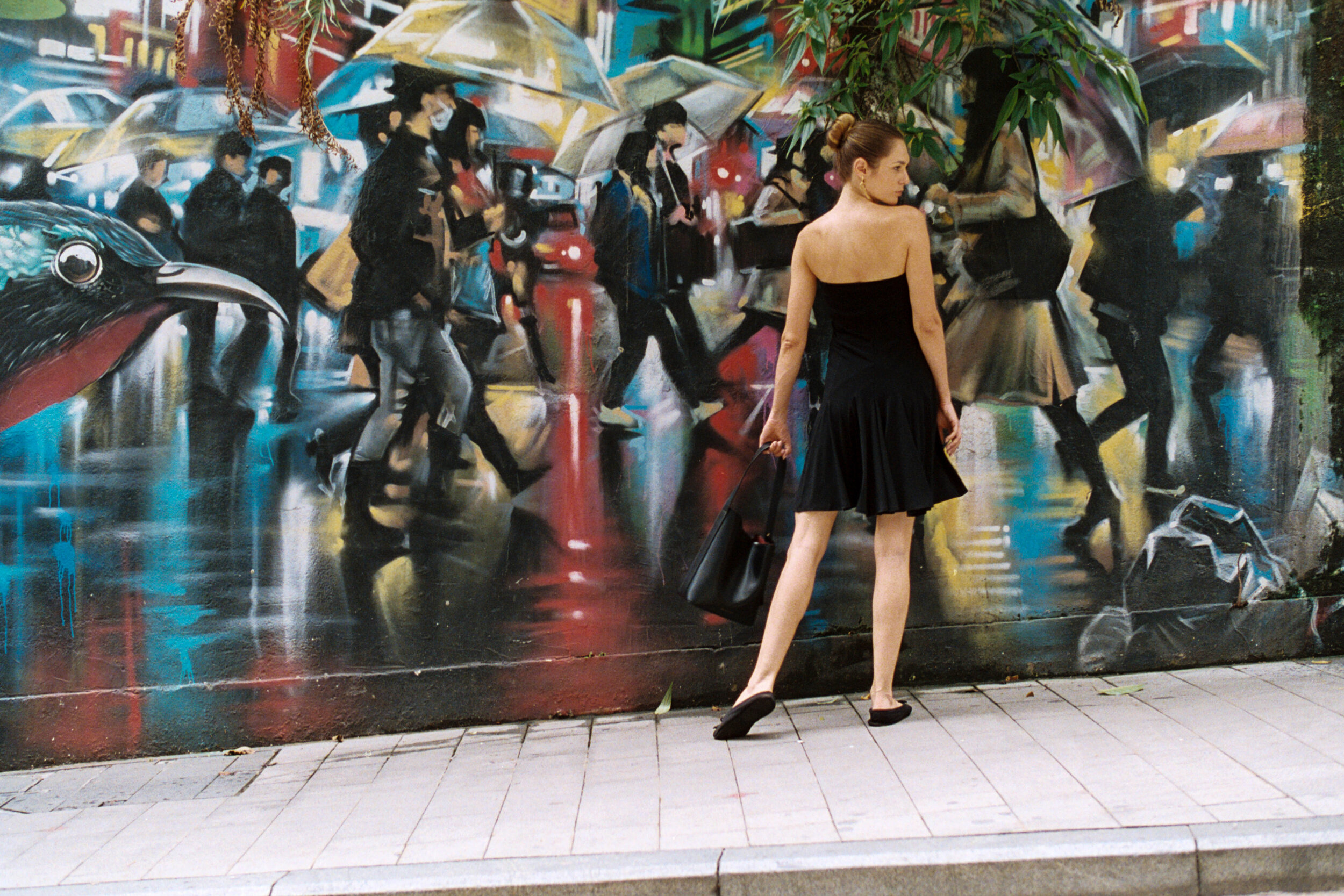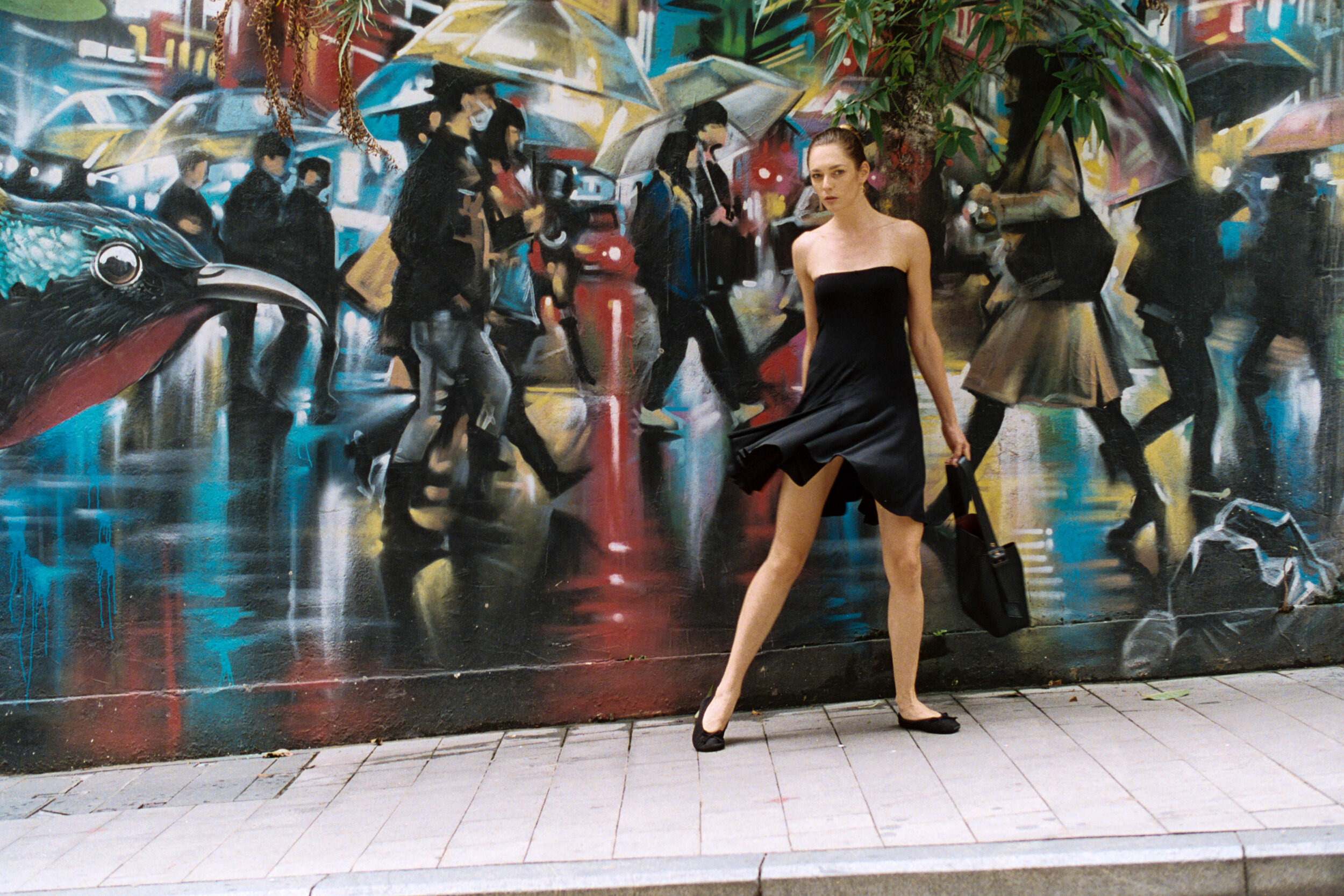Leica 50mm f/1.4 Summilux-M ASPH Revisited
A couple of weeks ago, I rewatched the movie Xanadu. It was a blast from my early past. As I recall, it was truly an awful movie that was universally panned by all the critics. And as I watched it again, it was just as bad. Only this time around, I forgave it for all its many faults - from its horrible acting, to its ill thought out story, to its ‘80s era special effects - because I love its soundtrack. You see, Xanadu is a musical, with original songs written by Geoff Lynn, preformed by his group the Electric Light Orchestra, and sung by Olivia Newton-John.
And once you frame the movie Xanadu from the lens of a musical, everything begins to make sense. The story is not as important anymore. Why should it? After all, aren’t all musicals really just natural extensions of operas - which by the way - are always forgiven for never making any literary sense. So, evaluating a musical, adapted for a movie, like a movie will only result in an overly prejudiced interpretation. Thus, to truly appreciate Xanadu for what it really is, one must evaluate it as a musical. Otherwise, one would risk passing judgement.
Even the dated dance sequences - especially of Ms. Newton-John bobbing about to the title track - no longer seems all that out of place anymore, once you frame the movie as a musical. Xanadu, in my amended opinion, is a wonderful musical - with wonderful music and the added bonus of a still-spritely Gene Kelly at the twilight of his career performing alongside without missing a step. I mean, how could anyone not like such a musical? But alas, the world only sees Xanadu as a movie - which is why it is regarded as a total box-office flop.
Leica 50mm f/1.4 Summilux-M ASPH + Kodak Portra 400 + Fill Flash
Leica 50mm f/1.4 Summilux-M ASPH + Kodak Portra 400 + Fill Flash
Leica 50mm f/1.4 Summilux-M ASPH + Kodak Portra 400
Leica 50mm f/1.4 Summilux-M ASPH + Kodak Portra 400
Leica 50mm f/1.4 Summilux-M ASPH + Kodak Portra 400
Leica 50mm f/1.4 Summilux-M ASPH + Kodak Portra 400
Personally, I believe we are all too quick in passing judgement. Yours truly included. Thinking back on some of my opined pieces on this dog and pony show, I might have been trigger-happy in passing judgement - like on the Leica 50mm f/1.4 Summilux-M-ASPH. Clearly, it would seem that I have, given that I have been favoring my 50 Lux for quite some time now. In fact, it is more than just my flavor of the month. Currently, it is my favorite of all my favorite children, seeing that the 50 Lux has been my go-to lens for the last twenty-two months.
Eating crow, you say? Well, not quite. I still stand by my words from all those many moons ago. With regards to digital photography, I would not get the 50 Lux. In that way, I have not contradicted myself. But with regards to analog photography, I would get the 50 Lux in a heartbeat. Frankly, I believe the 50 Lux is truly the perfect lens for Leica film cameras. And, I would not have made that fateful discovery, if not for the chance procurement of the limited Titanium Edition 50 Lux - which is now permanently paired to my Leica MP Titanium Edition.
Who would have thought that vanity would serendipitously change my opinion about the 50 Lux? The fact that the 50 Lux was not the fastest or most compact lens did not matter to me, once I internalized how misguided I had been to judge the 50 Lux exclusively from the viewpoint of prevailing digital extremes. After all, the 50 Lux was not made during a time when such bourgeois metrics like definition of resolved detail or rendered micro-contrast mattered - since high resolution and high dynamic range sensors did not exist during the film era.
Leica 50mm f/1.4 Summilux-M ASPH + Kodak Portra 400
Leica 50mm f/1.4 Summilux-M ASPH + Kodak Portra 400
Leica 50mm f/1.4 Summilux-M ASPH + Kodak Portra 400
Leica 50mm f/1.4 Summilux-M ASPH + Kodak Portra 400. Don’t know how that flare happened?
Leica 50mm f/1.4 Summilux-M ASPH + Kodak Portra 400
Leica 50mm f/1.4 Summilux-M ASPH + Kodak Portra 400
Instead, the 50 Lux was made during a simpler time when photography was about the photograph rather than the gear. Or to say it another way, what mattered back then were the ends and not the means. Thus, practical concerns relevant to photo taking were the only considerations that mattered - like whether one’s gear (being the means) did in fact facilitated one’s effort to capture a proper photo (being the end). Consequently, product specification or performance data never enter the discussion, since everyone was too busy taking photos.
So, it was with blinders on the preoccupation of prevailing digital extremes that I selected and shot my 50 Lux. Framed from the viewpoint of a simpler time, I grew increasingly fond of my titanium nifty fifty. The 50 Lux is a lens that offers the optimal sweet-spot of ergonomics, speed, compactness, and optics. It feels like it belongs in-hand. It is not intrusive nor does it ever feel like a burden to carry, lift, or use. It truly feels like an extension of your hand. High praise indeed. And, the photos it takes? They are always on-mark, flattering, and full of life.
Waxing poetics, am I? Perhaps. But, the 50 Lux always puts me in a joyous mood. Knowing that the photos will turn out the way I envisioned it, I always feel confident whenever it is on the business end of my rangefinder. It never disappoints, if you treat it right - handling it with trust and proper shooting fundamentals. Following that prescription, the 50 Lux is truly the only companion anyone needs from the first light of day to the waning light at dusk - ready and raring to go in rain or shine or inside a dimly lit room - to capture that photo opportunity.
Leica 50mm f/1.4 Summilux-M ASPH + Kodak Portra 400
Leica 50mm f/1.4 Summilux-M ASPH + Kodak Portra 400
Leica 50mm f/1.4 Summilux-M ASPH + Kodak Portra 400
Leica 50mm f/1.4 Summilux-M ASPH + Kodak Portra 400
Leica 50mm f/1.4 Summilux-M ASPH + Kodak Portra 400
Leica 50mm f/1.4 Summilux-M ASPH + Kodak Portra 400
And, what about those naysayers, thumbing their noses at the 50 Lux, who prefer the 35mm focal length - and by extension any version of the 35 Lux? To those who maintain that the 35mm focal length is the sweet spot of all-purpose photography - which is true - I can only say I prefer more background relevance. For the sake of accommodating greater coverage at closer shooting distances, the 35mm focal length sacrifices the intimacy of environmental context. It favors background documentation over narration of its relationship to the subject.
By comparison, those of use who prefer the 50mm focal length - and by extension the 50 Lux - are not looking for a lens made for all-purpose photography. So, we are not interested in a lens that favors vacation snaps and birthday parties - essentially proof-of-pilgrimage and group shots typical of all-purpose documentation. What we want is a lens - like the 50 Lux - that will go closer-up to our subjects and immerse them in the thick of their surroundings. In other words, we want a lens that is more specific in intent that emphasizes visual narration.
The 50 Lux - being the most well-balanced nifty-fifty to ever grace this world - does indeed have the mettle to emphasize visual narrative. It cuts out just enough environmental coverage to place our focus squarely on the subject without losing context. Furthermore, it does not capture a distorted version of the world - with straight lines straight and the background neither exaggerated or marginalized in presence. And, it does have enough speed for when the light is low for film capture and when subject isolation is required for the visual narrative.
Leica 50mm f/1.4 Summilux-M ASPH + Kodak Portra 400
Leica 50mm f/1.4 Summilux-M ASPH + Kodak Portra 400
Leica 50mm f/1.4 Summilux-M ASPH + Kodak Portra 400
Leica 50mm f/1.4 Summilux-M ASPH + Kodak Portra 400
Leica 50mm f/1.4 Summilux-M ASPH + Kodak Portra 400



Of course, one could argue that this can also be done with Wetzlar’s current extremes of speed and definition - the Noct 0.95 and the APO 50. True. However, the 50 Noct is somewhat of a prima donna with that noticeably long focusing throw. Plus, it is heavy and bulky. But, the trait that makes the 50 Noct less ideal for film use is its defining purpose - to shoot wide open. It is tricky hitting tack focus with it, which means that taking insurance shots are recommended. It is not a big deal on digital, but it can be very trying on film with 36 frames per roll.
As for the 50 APO (or any version of the 50 Cron), it is one stop short of usability in low light - especially for film capture. Plus, there is also that annoying matter of less subject isolation when shot wide open. This means the APO 50 and the 50 Cron, as a photographic tool, all have one less trick up its lens hood for expressing a visual narrative. It may not seem like much, but that one stop from f/2 to f/1.4 makes a world of difference. The magic of shooting wide open begins at f/1.4. It is when the distraction of film grain dissolves in the subject isolation.
Still, there is of course no necessity to pick the 50 Lux over any other M-mount lens. As much a luxury f/1.4 is in low light situation or subject isolation for film photography, it really isn’t an absolute necessity. And as bulky as the 50 Noct is, that does not make it unusable to shoot on film either. That said, photography for me needs to be fun. And, I do not especially find lugging the 50 Noct to be fun. Plus, I enjoy the luxury of that one extra stop for those low light and subject isolation situation. For me, the 50 Lux is perfect - which is why I love it on film.
Leica 50mm f/1.4 Summilux-M ASPH + Kodak Portra 400
Leica 50mm f/1.4 Summilux-M ASPH + Kodak Portra 400
Leica 50mm f/1.4 Summilux-M ASPH + Kodak Portra 400
Leica 50mm f/1.4 Summilux-M ASPH + Kodak Portra 400
Leica 50mm f/1.4 Summilux-M ASPH + Kodak Portra 400
Leica 50mm f/1.4 Summilux-M ASPH + Kodak Portra 400
But for now, I will have to put aside my beloved titanium 50 Lux, for I have just received the redux Leica 50mm f/1.2 Noctilux-M Asperical. Will the redux 50 Noct AA be a contender to push the 50 Lux off the pedestal? Well, no, since the redux Noct 50 AA is a limited production run. Good luck finding one! As for the original 50 Noct AA, that is even more rare. As for the 50 Noct 1.0, the issue of girth prohibits it from the top spot. So, there you have it. The 50 Lux (in all its versions) is the current king of the hill for analog photography!
Context is everything. Once framed from the viewpoint of a simpler time - with blinders on the preoccupation of digital extremes - the 50 Lux can be viewed as it should be. It is an absolute joy to use - perfectly balanced, never disappointing, and ready and raring to go in rain, in shine, and inside dimly lit rooms. So, not exactly the pariah or gear equivalent of the film Xanadu. But then again, Xanadu is a wonderful musical. Universal Studios should make a remake of it.
Special thanks to Beatrice for joining me on this photowalk





